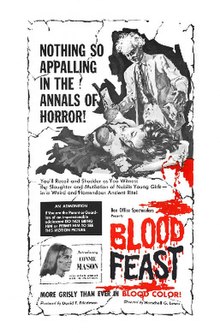
Cabin Fever is a 2002 American horror comedy film co-written and directed by Eli Roth and starring Rider Strong, Jordan Ladd, James DeBello, Cerina Vincent, Joey Kern, and Giuseppe Andrews. The story follows a group of college graduates who rent a cabin in the woods and begin to fall victim to a flesh-eating disease. The inspiration for the film's story came from a real-life experience during a trip to Iceland when Roth developed a skin infection.

A splatter film is a subgenre of horror films that deliberately focuses on graphic portrayals of gore and graphic violence. These films, usually through the use of special effects, display a fascination with the vulnerability of the human body and the theatricality of its mutilation. The term "splatter cinema" was coined by George A. Romero to describe his film Dawn of the Dead, though Dawn of the Dead is generally considered by critics to have higher aspirations, such as social commentary, than to be simply exploitative for its own sake.
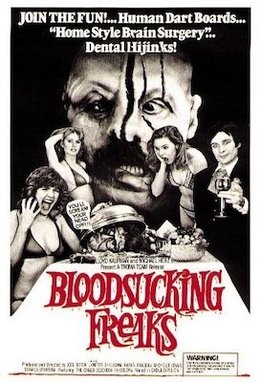
Blood Sucking Freaks is a 1976 American exploitation splatter film directed by Joel M. Reed and starring Seamus O'Brien, Luis De Jesus, Viju Krem, Niles McMaster, Dan Fauci, Alan Dellay, and Ernie Pysher. Set in New York City, the film follows a human trafficking ring masquerading as an experimental theater group, which stages Grand Guignol-style performances for audiences, who are unaware that actual murders and torture are being enacted onstage.
David Frank Friedman was an American filmmaker and film producer best known for his B movies, exploitation films, nudie cuties, and sexploitation films.

Herschell Gordon Lewis was an American filmmaker, best known for creating the "splatter" subgenre of horror films. He is often called the "Godfather of Gore", though his film career included works in a range of exploitation film genres including juvenile delinquent films, nudie-cuties, two children's films and at least one rural comedy. On Lewis' career, AllMovie wrote, "With his better-known gore films, Herschell Gordon Lewis was a pioneer, going further than anyone else dared, probing the depths of disgust and discomfort onscreen with more bad taste and imagination than anyone of his era."

Two Thousand Maniacs! is a 1964 American horror film written and directed by Herschell Gordon Lewis and starring 1963 Playboy Playmate Connie Mason. It follows a group of Northern tourists who are savagely tortured and murdered during a Confederate celebration of a small Southern community's centennial.
Connie Mason is an American model and actress who was Playboy magazine's Playmate of the Month for its June 1963 issue. Mason then acted in the gore movies pioneered by Herschell Gordon Lewis, Blood Feast and Two Thousand Maniacs! Her centerfold was photographed by Pompeo Posar. She was also a Playboy Bunny at the Chicago club.

Vampira is a 1974 British comedy horror film directed by Clive Donner, and starring David Niven and Teresa Graves. This spoof of the vampire genre was re-titled Old Dracula for release in the United States, in an attempt to ride the success of Young Frankenstein.

Color Me Blood Red is a 1965 American splatter film written and directed by Herschell Gordon Lewis about a psychotic painter who murders people and uses their blood as paint. It is the third part of what the director's fans have dubbed "The Blood Trilogy," including Blood Feast (1963) and Two Thousand Maniacs! (1964).

The Wizard of Gore is a 1970 American splatter film directed by Herschell Gordon Lewis and starring Ray Sager, Judy Cler, and Wayne Ratay. The screenplay was written by Allen Kahn.

Blood Diner is a 1987 American horror comedy directed by Jackie Kong and starring Rick Burks, Carl Crew, Roger Dauer, LaNette LaFrance, and Lisa Guggenheim. It was written by Michael Sonye. The plot follows two brothers setting up a vegetarian restaurant as a front for them to kill women and collect their severed body-parts to resurrect the Lumerian goddess Sheetar.
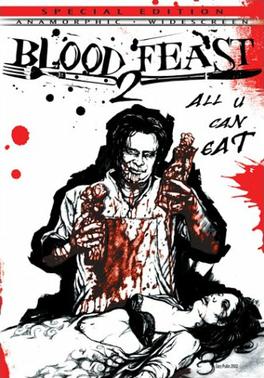
Blood Feast 2: All U Can Eat is a 2002 slasher splatter film directed by Herschell Gordon Lewis and starring John McConnell, Mark McLachlan, Melissa Morgan, Toni Wynne, and J.P. Delahoussaye. It is the sequel to the 1963 film Blood Feast. Filmed under a working title of Blood Feast 2: Buffet of Blood and using the same grindhouse style as its predecessor, the film continues the story began in the original film, where a grandson of Fuad Ramses attempts to restart his grandfather's catering business. The film depicts the killer falling victim to spirit possession by the goddess Ishtar.

The Gore Gore Girls is a 1972 comedy horror splatter film directed by Herschell Gordon Lewis.
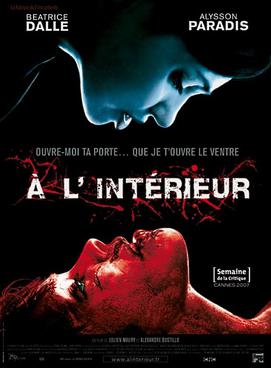
Inside is a 2007 French horror film directed by Julien Maury and Alexandre Bustillo and starring Béatrice Dalle and Alysson Paradis. Written by Bustillo, it is the first feature film from either director. It concerns the attack and home invasion of a young pregnant woman (Paradis) by a mysterious stranger (Dalle) who seeks to take her unborn baby. The film received generally positive reviews from mainstream critics upon its release and was particularly well received among horror film critics, noting it for being a genuinely scary and brutally violent example of the new wave of French horror.

Blood Freak is a 1972 American horror film directed by Brad F. Grinter and starring Steve Hawkes, Dana Cullivan, Heather Hughes, and Bob Currier.
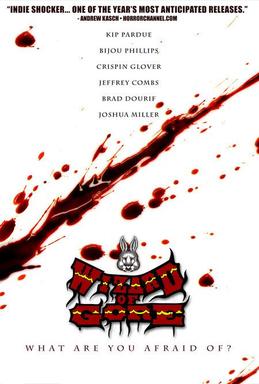
The Wizard of Gore is a 2007 splatter/noir horror film directed by Jeremy Kasten and starring Kip Pardue, Bijou Phillips, Crispin Glover, Joshua Miller, Brad Dourif, Jeffrey Combs, and the Suicide Girls. The film is a remake of the 1970 Herschell Gordon Lewis film of the same name.
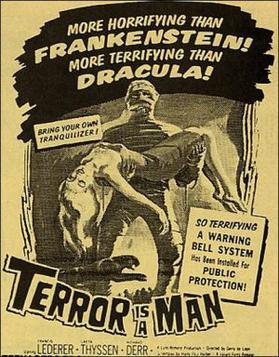
Terror Is a Man is a 1959 black-and-white Filipino/American horror film directed by Gerardo de Leon.

The Bat People is a 1974 American horror film directed by Jerry Jameson, produced by Lou Shaw, and distributed by American International Pictures. Starring Stewart Moss and Marianne McAndrew, the film tells the story of a doctor, who after being bitten by a bat in a cave, undergoes an accelerating transformation into a man-bat creature.

El fantasma del convento is a 1934 Mexican horror film directed by Fernando de Fuentes, who also co-wrote and edited the film.

The Feast is a 2021 Welsh folk horror film directed by Lee Haven Jones from a screenplay by producer Roger Williams. Filmed in the Welsh language, the film stars Annes Elwy, Nia Roberts and Julian Lewis Jones. It premiered at the Official Selection of the 2021 South by Southwest and the same year was screened at the Fantasia International Film Festival.
